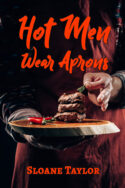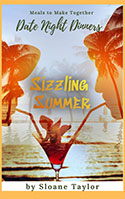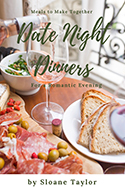’Tis the Season for Christmas Stories
December 9, 2019 | Author Friend Promo
Or How to Write a Christmas Play
by C.D. Hersh
If you’re like us, you love a great Christmas story. In fact, last year we devoured Christmas movies well into springtime. This summer, Catherine started bugging Donald to look on Roku and Sling for new holiday movies. Being the nice guy that he is, Donald agreed. We already have several queued up for watching. So when we were approached to write a post about “How to Write a Christmas Play”, we thought about it for a bit and said, “Sure. We’ve done that.”
There are a lot of things we could say about how to write a Christmas play, or any play for that matter. The basics of writing a good book are the same as writing a play. You need a good story, good characters, and good conflict. There are some differences, however. We could talk about the nuts and bolts of playwriting, such as:
• Formatting.
• Making the last moment of the play a satisfying ending.
• Always keeping the action moving forward since time shifts and short scenes that hop around don’t work well for plays.
• Proper scene structure.
• How a play script usually has little dialogue or action tags or setting description.
• And so on.
However, since these elements are things that you can learn from a book, we decided to take a different approach and focus on the five lessons we found to be most important in play writing by walking you through one of our most successful Christmas plays.
Catherine has always loved Christmas, but an interest in writing Christmas stories, particularly Christmas themed plays, started in the 1990s when we were in our church’s drama group. The church leadership decided to put on an outdoor re-creation of Bethlehem set on the night of Jesus’s birth. They would build a representation of Bethlehem in the church parking lot. The village would have several historically researched shops, a synagogue, a house, an inn, animals, and the stable where Jesus was born. Originally the leadership wanted a walk-through diorama where the town’s characters interacted with each other, but not with the people visiting the event. Our drama leader knew Catherine was a freelance writer and that we were interested in writing plays, so she urged us to create a script for Back to Bethlehem, which was the name of the event.
Lesson 1: Accept the challenge
We had never done a play before, but had acted in plenty in the church drama ministry.
So when we were asked, we accepted the challenge. We dug into playwriting
books and brushed up on the nuts and bolts of playwriting.
Lesson 2: Start early
In early spring of the year the event was to be hosted, we threw ourselves into the job and read and reread the Christmas story from the Bible. We learned it’s never too early to think about Christmas when planning a Christmas story. If you’re out of the Christmas season when you need inspiration, put on the Christmas music. Put up your tree in June. Don your Santa hat and beard. Go Christmas shopping and wrap the gifts. Do whatever it takes to get into the Christmas spirit.
Lesson 3: Look for the unexpected. Find the twist. The new in the old.
Religiously, Christmas is about Jesus’s birth. Secularly, Christmas is about Santa, gift giving, charity, family gatherings, food, joy, and cheer. If you’re planning a Christmas story, play, or book, you need to figure out how to make a well-known story unique and fresh. Since most people visiting Bethlehem would know the biblical story of the virgin birth, our challenge was to create a new tale, yet keep the age-old tale intact for the hundreds of people who would travel back to Bethlehem on a mulch-strewn tar parking lot.
To make an old story new, we suggested the visitors to Bethlehem follow several characters through the town as they looked for Mary, Joseph, and a baby born in a stable. One character, Myriaden, went from shop to shop looking for Mary interacting with all the townspeople, asking if they had seen a young pregnant woman, telling them how she’d traveled with her from Nazareth. And in case some of the newcomers to the town missed Myriaden, a group of rowdy shepherds who saw the heavenly host also came through the town looking for the baby born in a stable. Another set of characters, the Roman soldiers, told a different part of the story—the part of the suppression of the Jews and their disbelief in the shepherds’ tale of angels singing in the sky.
Mary, the shepherds, and the Roman soldiers told the stories of the Bible in an unexpected way, as Christmas plays depicting Jesus’s birth normally center around Mary, Joseph, and baby Jesus. The interesting thing about the Back to Bethlehem drama was that it became an interactive play. While our characters, both those “leading” the visitors and those in the shops, had set lines to say, they ended up interacting with the visitors to Bethlehem who wanted to know more about the town, the time and the story. So, we developed a set of improvisational lines for the characters to use. They always kept in character as they had spur-of-the-moment conversations with the visitors. Visitors were immersed in the drama, and that was very unexpected and very delightful for them.
It’s highly unlikely that your Christmas drama will be as improvisational as Back to Bethlehem was, but the example certainly shows the twist in this story. We broke the fourth wall of the stage and completely immersed the audience in the drama.
Lesson 4: Watch your Dialogue
As with books, dialogue is important and should sound natural no matter your genre. Plays, unlike books, are composed completely of dialogue. You have a few moments to capture your audience. They can’t go back and hit rewind or flip the page back if they think they missed something You don’t have the luxury of internal thoughts, or rambling commentaries (unless you’re Shakespeare). Plays don’t have exposition and, just like books, shouldn’t have author intrusion. If you can’t write without a lot of narrative, exposition, or description, you have a book, not a play.
Here’s an example of the importance of dialogue.
Because we were writing for a historical period in which we did not know how the people sounded, in English, we chose to use a more formal language, with no contractions or slang. It was just different enough that it gave a unique flavor to the actors’ speech. When they were interacting with the visitors, they also did not recognize modern day terms or items the visitors might say or show to them. Once when Catherine was talking to a visitor, he used the word technology while admiring her earrings.
Catherine said, “I do not understand this word, sir.”
“Where did get your earrings?” he asked.
“The goldsmith hammered them out for me,” she replied.
“If they’re made of gold, then you’d better hold on to them,” he said.
“As you wish, sir,” Catherine replied. Then she reached up and grasped both of her earrings, bowed, and walked away.
Peals of laughter followed her as she exited. In Bethlehem, Catherine would not have known the slang “Hold on to them.” So, she reacted literally. We’re fairly certain those visitors remembered their visit to Bethlehem for a long time. And that’s what you want your audience to do, too.
Lesson 5: Create a dramatic ending
The town of Bethlehem was noisy and crowded. Roman soldiers bellowed at the local beggar, harassed the shop keepers, and insulted the shepherds looking for a baby in a manger. Shop keepers shouted at passersby to come buy their wares. The women at the well gossiped loudly. The priest in the synagogue taught his young charges, quoting the scriptures in Hebrew. The guests at the inn complained at the crowded conditions. But when visitors passed through the small hallway into the stable, the whole atmosphere changed. Mary and Joseph spoke softly and calmly to all who approached them. Myriaden, who had found Mary, whispered and admired the baby. The shepherds bowed down and worshipped him. Even the visitors who came to see the town spoke in hushed tones as they gazed on Mary, Joseph, and the baby Jesus. Although you heard the sounds of the busy town, everyone in the stable was quiet and reserved, even the children. Coming from the hustle and bustle of the crowded town into the quiet stable was a magical moment. Even today, nearly twenty years later, when we meet people who visited our Bethlehem they comment on how much it touched them. As writers, isn’t that what we want to do with our stories—touch people?
We’ve written several Christmas plays—Back to Bethlehem, which ran for 5 years at our former church and was sold to two other churches; a Christmas musical that has not been yet published, and four Christmas puppet plays that have been performed at our current church. We also wrote a Christmas novella Kissing Santa, which is part of the Christmas Collection Sizzle in the Snow, published by Soul Mate Publishing.
If you want to write a Christmas play, we suggest you read a lot of plays. Study the craft of playwriting, and apply the five lessons we’ve talked about. Remember, they translate to your manuscripts whether you’re writing plays, stories, or books.
Have a Merry Christmas and Happy Playwriting Year!
While you’re thinking about your next Christmas play or story, take a peek at this excerpt from C.D. Hersh’s Christmas novella Kissing Santa.
When Sam S. Klaus, a professional Santa, has a fling with a beautiful elfette at a Santa Conference, he wants to make her Mrs. Klaus, but his intended disappears before Santa can pop the question.
EXCERPT
Anna Noel studied the trim backside of the Santa standing in front of her. He appeared younger than most of the Santas at the Santa Claus conference she’d chosen to attend this year. A lot more attractive than any Santa she’d ever met. For the briefest of moments she let her mind wander, lingering on Christmas wish number nine—make love to Santa. A heated flush climbed her chest as she envisioned the scene, and she flapped the jacket of her green elf costume to cool down.
Her gaze traveled over his hips, chest, and to the beginnings of a snow white beard. Then to his shock of silver hair underneath the white-trimmed, red Santa hat.
Yep. Definitely a Santa she wanted to know. Too bad she wouldn’t be the elf to his mall Santa. They could get to know each other and more.
The conference registrar drew her out of her Christmas fantasy with a loud, “Miss? Are you with this Santa?”
“What? No. I don’t have a Santa. I’m here alone.”
Sexy Santa turned and held out his hand. “Me, too. I’m Sam S. Klaus.”
A smile curled her lips as she took his hand. “As in Sam Santa Claus?” His warm palm sent tingles through her fingers as he gently squeezed them.
A lopsided grin slanted his cheek upward, and he flashed a brilliant smile. “You have the same warped sense of humor as my parents.” He gave her a mock bow. “Sam S., for Santa, Klaus, with a K.”
“That’s your real name?” He let go of her hand. She fought to keep from grabbing it back. A real Santa Klaus? How great was that?
“The same, and you are?”
“An—” She stopped, suddenly unwilling to reveal her name. A rollercoaster of emotions raced through her, suggesting she might hit number nine with this Santa. If she did, and it didn’t go well, she wouldn’t want Sam Klaus to know her real identity. “An elf, who needs a Santa,” she said. “How about we team up? I’ll be your personal elfette, and you can be my Santa.”
 Putting words and stories on paper is second nature to co-authors C.D. Hersh. They’ve written separately since they were teenagers and discovered their unique, collaborative abilities in the mid-90s. As high school sweethearts and husband and wife, Catherine and Donald believe in true love and happily ever after.
Putting words and stories on paper is second nature to co-authors C.D. Hersh. They’ve written separately since they were teenagers and discovered their unique, collaborative abilities in the mid-90s. As high school sweethearts and husband and wife, Catherine and Donald believe in true love and happily ever after.
The first four books of their paranormal romance series entitled The Turning Stone Chronicles are available on Amazon. They have a short Christmas story, Kissing Santa, in a Christmas anthology titled Sizzle in the Snow: Soul Mate Christmas Collection, with seven other authors. Also a novella, Can’t Stop The Music, with twelve other authors from various genres with a book coming out each month in 2017.
They look forward to many years of co-authoring and book sales, and a lifetime of happily-ever-after endings on the page and in real life.
Learn more about C.D. Hersh on their website and their Amazon Author Page.
Stay connected on Facebook, Twitter, and Goodreads.






